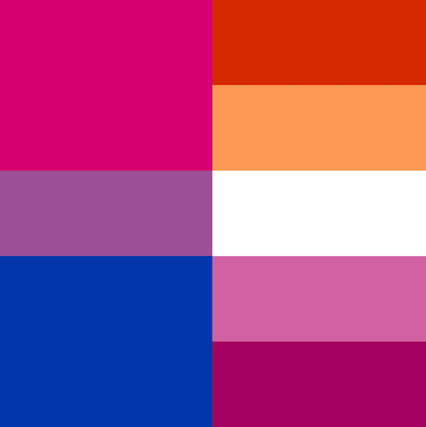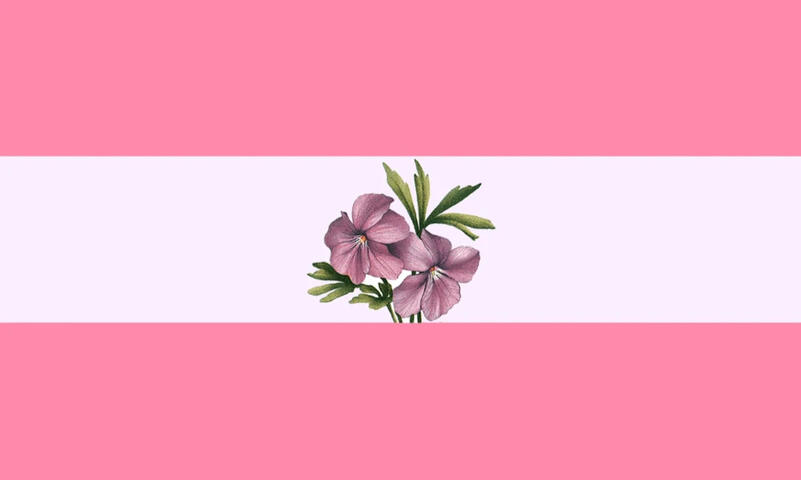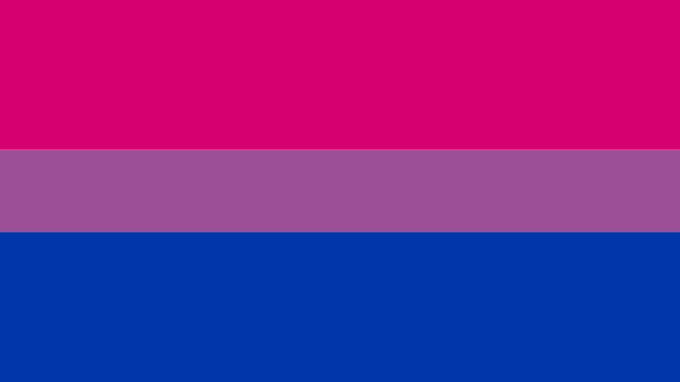Bi Lesbians?
If you've been anywhere close to sapphic twitter, chances are that you probably heard about the bi lesbian label and the discourse surrounding it.
This carrd will focus on explaining the different definitions of this label and demonstrating why identifying as such is harmful to lesbians and bisexuals alike.
Let's begin!
Definition
What are bi lesbians?
There are several meanings, as people identify as bi lesbians for different reasons.
1) The split attraction model
Most people's sexual and romantic attraction match up, for example if you're lesbian, you're homoromantic and homosexual; if you're bi, you're biromantic and bisexual.
However, this is not the case for everyone. The split attraction model is used when sexual and romantic orientations do not match up. The split attraction model is mostly used in asexual and aromantic communities.
"Bi lesbians" in the context of the split attraction model is a shortened version of:
biromantic homosexuals
or
bisexual homoromantics.
But using "lesbian" to describe yourself in this context is not accurate!
why?
Lesbian is a woman (or a nonbinary person with connection to womanhood)
exclusively attracted to women (and people with connection to womanhood).
Lesbianism by definition excludes any attraction to men.
Biromantic homosexual has romantic attraction to men, which is contradictory to lesbianism.
Bisexual homoromantic has sexual attraction to men, which is contradictory to lesbianism.
You cannot be a lesbian if you're also attracted to men, even if that attraction is strictly romantic or strictly sexual.
2) Some bisexual women have preference for women.
There are bisexual women that have a preference for women and adapt term "bi lesbian" to signal that preference.
There are also bisexual women, who despite also being attracted to men, only seek out relationships with other women and adapt the term "bi lesbian" as a way to acknowledge their attraction as well as their choice to only pursue relationships with women.
Both of these arguments are invalid.
Why?
Bisexuality doesn't mean that you have to be equally attracted to men and women.
Having a preference for one gender DOES NOT INVALIDATE your attraction to other genders.
You also do not have to date all genders that you are attracted to to be bisexual.
Not wanting to pursue relationships with men DOES NOT make you any less bisexual.
To suggest either of those ideas would be bi erasure.
3) Bi lesbians don't necessarily imply attraction to men.
"Bi lesbians" can also be women who are attracted to women and nonbinary people. They argue that this way, they can acknowledge their partners' nonbinary gender and be in a relationship with them without misgendering them.
There's just one problem with this rhetoric...
Lesbianism is already nonbinary-inclusive.
(All sexualities are.)
This does not mean that all nonbinary people will be included in lesbianism.
Nonbinary is an umbrella term for any gender outside of the binary. It is a very broad term that can mean lots of different things to lots of different people.
Some nonbinary people are genderless. Other experience a neutral gender. There are nonbinary people that have connection to one or both binary genders. For some nonbinary people their gender isn't even set in stone, but it is fluid.
Since there are so many ways to be nonbinary, some of them will be compatible and intersect with being a lesbian and being included in lesbian attraction.
This does not mean that nonbinary people are "women-lite," just that the ones who partially identify as women or have connection to womanhood can be (and are) included in lesbianism.
Therefore the term "bi lesbian" is pointless and redundant.
Moreover, it implies that lesbianism is strictly binary in nature. To exclude people who experience womanhood in non-traditional way that does not fit the binary is enbyphobic and the implication that lesbianism doesn't already include those identities is lesbophobic.
Ignoring the existence of different nonbinary identities and treating nonbinary people like they are a coherent category of a third gender which is always completely separate from manhood and womanhood is also enbyphobic.
4) "Lesbian" is an umbrella term for all women who love women.
Historically, lesbian used to mean "woman attracted to women" which included women who were attracted to women exclusively, as well as women who were also attracted to men. Both shared the same communities.
and that's true. we used to share the same label and communities before bisexuality was coined and solidified into its own identity.
Lesbians and bisexual women share many experiences, but not all.
Bi women's attraction to men and lesbians' lack of it means our material realities will be affected by it and differ:
For example, lesbians struggle with being pressured to like & date men.
Bisexual women are pressured to "pick a side."
But wait!
There is a way to share a community and an identity between lesbians & bi women.
SAPPHIC is a label that means "woman loving woman". It is an umbrella term for all women that are attracted to women regardless of whether they are also attracted to men or not. This includes lesbians, bisexual and pansexual women.
We can coexist under that label without taking away the meaning of the lesbian and bisexual labels as they are used today.
And we can share a community together - the sapphic community.
"But every other sexuality is an umbrella term! Queer, gay, bisexual and pansexual are all umbrella terms! Why is lesbianism the only one that isn't an umbrella term?"
I heard this talking point many times but it is mostly false.
Queer originated as a slur and all members of LGBT+ community can choose whether to reclaim it and identify with or not. While it is an incredibly broad label, it doesn't automatically include everyone in the LGBT+ community, as not everyone is comfortable reclaiming it.
Gay in the colloquial sense can be used by the wider LGBT+ community (as in, "We, the Gays!").
However gay man is not an umbrella term. It is an identity for men (or people with connection to manhood) who are exclusively attracted to men (and people with connection to manhood).
Simiarly lesbian (not an umbrella term) is an identity for women (or people with connection to womanhood) exclusively attracted to women (and people with connection to womanood).
Bisexual and pansexual are not umbrella terms either. Bisexuality is attraction to all genders and pansexuality is attraction regardless of gender. While bisexuality and pansexuality may have some overlap between each other, they have zero overlap with lesbianism and gayness by the virtue of homosexuality excluding attraction to the opposite binary gender.
Sexualities, which ARE umbrella terms include: sapphic/wlw and achilllean/mlm.
Just because there are some labels that are also umbrella terms, does not mean that every sexuality will be an umbrella term too!
Some more points...
Why is "bi lesbian" a harmful label?
In short,
1) It reinforces the negative stereotypes associated with both lesbianism and bisexuality
&
2) It abstracts the meaning of both of these labels.
1) Negative stereotypes
Lesbianism and bisexuality are two distinct sexualities. "Bi lesbianism" blurs the line between them in such a way that it reinforces negative stereotypes about lesbians and bisexual women, which is harmful to both groups.
Some examples of those stereotypes include:
"Every woman is attracted to men in some capacity, even lesbians." The implication is that lesbians can be attracted to men, which is LESBOPHOBIC.
"It's possible for lesbians to be in a healthy romantic or sexual relationship with men." This is blatantly LESBOPHOBIC, as lesbians are often pressured to enter relationships with men (compulsory heterosexuality).
"Bisexuality means that you're equally attracted to men and women." The implication is that you're no longer bisexual if you have a preference for one gender is BIPHOBIC.
"You cannot be bisexual unless you date both men and women." The implication is that you're not bisexual anymore if you don't have dating history to "prove it", which is BIPHOBIC.
"Bisexuality is a phase. Bi people always end up picking a side." The implication is that bisexuality does not really exist and that the bisexual label is just a temporary placeholder until they find their real identity, which is blatantly BIPHOBIC.
"Bisexuality means that you're half-gay half-straight / part-gay part-straight." By supporting bi lesbians (and bi gay men or bi straight people) you're treating bisexuality as a modifier rather than a full identity, which is BIPHOBIC.
2) Words have meanings
We have created these labels to understand ourselves and each other and to effectively communicate with one another. Once you abstract it to the point where it is impossible to communicate an idea to another person without them having to ask for further clarification, those labels lose their functionality and become useless.
Case in point, the FOUR different meanings of bi lesbian:
1) biromantic homosexual / bisexual homoromantic
2) bi woman with preference for women / bi woman that only dates women
3) woman attracted to women and nonbinary people
4) any bi woman that decided to add on the lesbian label because it's "an umbrella term"
Not only there are multiple ways to interpret what a bi lesbian is (therefore making it a useless term on its own), but it also defies the definitions of lesbian and bisexual labels as they are currently used today, making those unusable as well.
Bi lesbian is a harmful label.
Now what can you use instead?
There are quite a few alternatives...
Sapphic
SAPPHIC is a label that means "woman loving woman". It is an umbrella term for all women that are attracted to women regardless of whether they are also attracted to men or not. This includes lesbian, bisexual women and pansexual women.
Are you bisexual but want an umbrella term for women who love women? Use sapphic.
Do you want to be involved in the shared community? Use sapphic.
Do you want to emphasize your preference for women? Use sapphic.
Do you want to express your willingness to only pursue relationships with women? Use sapphic.
Do you use the split attraction model and your full label is too mouthful? Use sapphic.
Bi
As I already said, having a preference does not make you any less bi.
Not pursuing relationships with men while being genuinely attracted to them does not make you any less bi.
Even if you use the split attraction model, the fact is that overall you're still attracted to multiple genders, even if your attraction to men is either strictly romantic or strictly sexual. But it's still there, so the "bi" label still fits.
Just... spell it out
If you're bisexual with preference, say that you're bisexual with preference.
If you only want to date women, say that instead of adding on the lesbian label.
If you're questioning between lesbianism/bisexuality, you can say you're a questioning sapphic.
If you use the split attraction model, just spell out your identity.
It won't cause any confusion, it won't be reinforcing any negative stereotypes and you will be using the labels in a way that are easily understandable to others.
Coin a new term!
There is nothing stopping you from coining a new term that reflects your sexuality faithfully without using harmful labels. If you want to express your preference/usage of the split attraction model, and you don't want to use an umbrella term (sapphic), you can coin a new term with that specific meaning, that won't be harming lesbians and bisexuals.
Proposed terms
There already are some proposed terms to replace the harmful label that is "bi lesbian":
Bisaph - short for "bi sapphic," it was proposed to replace the bi lesbian label in context of the split attraction model (bisexual homoromantic / biromantic homosexual)
Pink bisexual - label for a bisexual person with preference for women
Considering compulsory heterosexuality...
Compulsory heterosexuality (short: comphet) is the assumption that everyone is straight by default, that the only “real” relationships are heterosexual. It is enforced by the patriarchal and heteronormative society to such a degree, that lesbians often mistake any positive or negative feelings towards men as attraction. This "attraction" is not genuine.
There are many ways in which compulsory heterosexuality can manifest itself, but instead of trying to summarize it myself, I will link you to a useful masterdoc, which actually describes compulsory heterosexuallity in great detail.
One thing I would like to point out about it is, that it is not uncommon for lesbians to feel strong connection to the lesbian label even before they realize they are exclusively attracted to women (and people with connection to womanhood).
If you identify as a bi lesbian, it is perhaps worth considering, if there is a deeper reason why you're drawn to the lesbian label and re-evaluating if the attraction you feel towards men is genuine or if it might be just a product of compulsory heterosexuality.
But of course, if you're 100% sure that your attraction to men is genuine, then you have no business continuing identifying as a lesbian.
To summarize...
Bi lesbian has many different meanings, all of which are contradictory to lesbianism.
It is a label that reinforces biphobia, lesbophobia, and to certain extent, enbyphobia as well.
There are many alternatives you can use instead of this label.
You might also consider evaluating if you experience compulsory heterosexuality.
You can give this useful masterdoc about comphet a look.
The same principles can apply to pan lesbians as well.
The end!
Lesbianism
Lesbian is a woman (or a nonbinary person with connection to womanhood)
exclusively attracted to women (and people with connection to womanhood).
Lesbianism by definition excludes any attraction to men.



